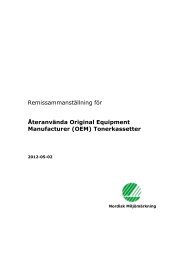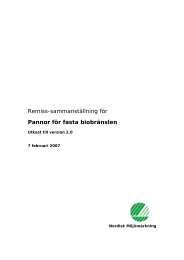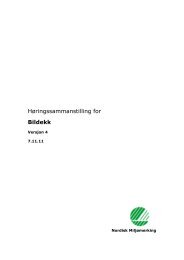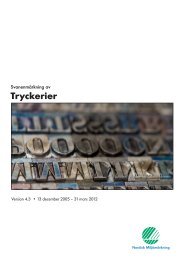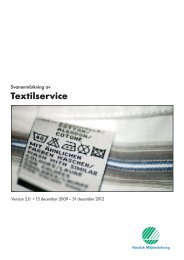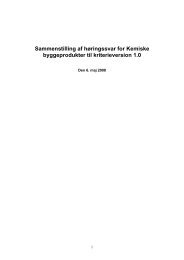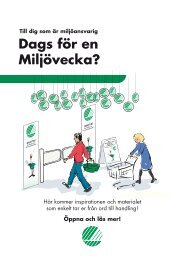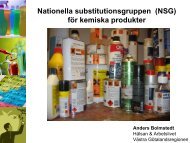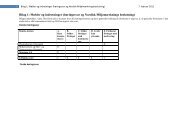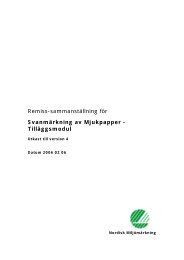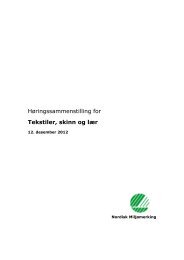Småhus, flerbostadshus och förskolebyggnader - Svanen
Småhus, flerbostadshus och förskolebyggnader - Svanen
Småhus, flerbostadshus och förskolebyggnader - Svanen
Create successful ePaper yourself
Turn your PDF publications into a flip-book with our unique Google optimized e-Paper software.
Nordisk Miljømerking<br />
Hus, leiligheter og barnehager 089/versjon 2<br />
Høringssammenstilling, oppdatert 10. august 2010<br />
exposure scenarios in the extended Safety Data Sheet which is passed down the supply<br />
chain. This risk‐based approach throughout the substance life cycle is the common<br />
ground of the EU chemicals regulation. The Nord Ecolabel prohibits certain substances /<br />
R phrases without verifying whether the use of the substance/ product is leading to risks<br />
for users / the environment. Neither does it assess whether the use of a certain substance /<br />
product improves the life cycle performance of the overall building (durability,<br />
reduced material use etc.). On the other hand, the use / presence of certain substances<br />
which are proven to be carcinogenic is authorised without restrictions. Hence, it is<br />
doubtful whether environmental and health protection was really the main driver for this<br />
Ecolabel. This impression is reinforced by the proposed exclusion of substances for<br />
which scientific evidence shows that they are not dangerous (see following section).<br />
BING calls on the Nordic Ecolabel to put the material criteria on a scientific basis and<br />
apply the approach adopted by European legislation.<br />
European Council for Plasticisers and Intermediates (ECPI)<br />
The creation of parallel initiatives is unnecessary and confusing<br />
Construction chemical products are already covered under the Construction Products<br />
Directive (CPD) and in future under the Construction Products Regulation (CPR). Most<br />
importantly, their use in all applications is now covered under the new European<br />
Chemicals Regulation, REACH.<br />
The REACH regulation was developed over several years together with Government,<br />
industry and non-governmental stakeholders.<br />
On this basis, the REACH process should not be undermined by initiatives which can<br />
lead to confusion in the market place and unjustified deselection with associated socioeconomic<br />
impact for European society.<br />
The European polymer producers (PlasticsEurope), together with the European<br />
PVC resin producers (ECVM), and the European plastics converting industry<br />
(EuPC)<br />
General comments on chemicals/plastics in construction materials :<br />
The EU REACH regulation introduces the concept of chemical risk assessment and<br />
management before a chemical substance is put on the market and shifts the<br />
responsibilities from public authorities to industry. Additionally, the EU Construction<br />
Products Directive and the EU Ecodesign directive are undergoing revision to take into<br />
account sustainability design aspects of construction products in their conformity<br />
assessment. Accordingly, there is no need that the Nordic Swan should contain<br />
requirements for chemicals/polymers in construction materials and buildings.<br />
Comments on chemicals/plastics in construction materials :<br />
The EU REACH regulation introduces the concept of chemical risk assessment and<br />
management before a chemical is put on the market and shifts the responsibilities from<br />
public authorities to industry. Additionally, the EU Construction Products Directive and<br />
the EU Ecodesign directive are undergoing revision to take into account ecological<br />
design aspects of construction products in their Conformity Assessment. Accordingly,<br />
67 (165)



